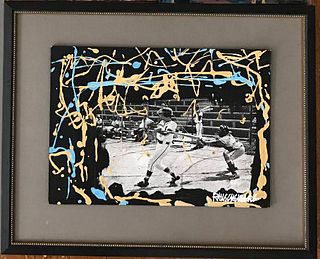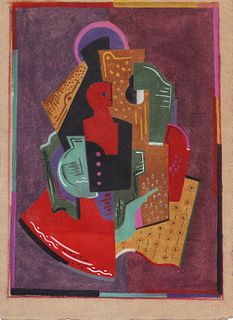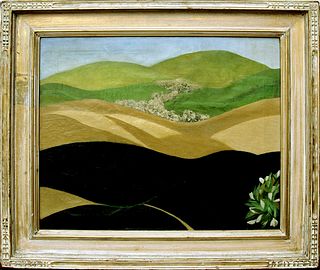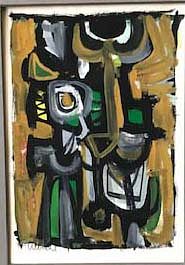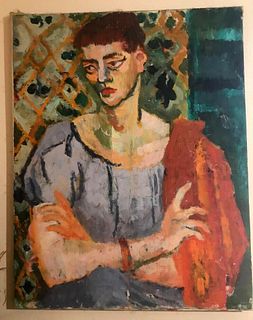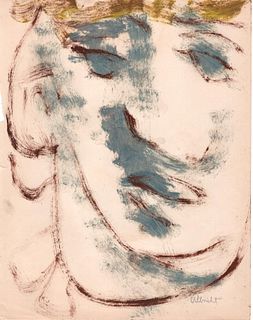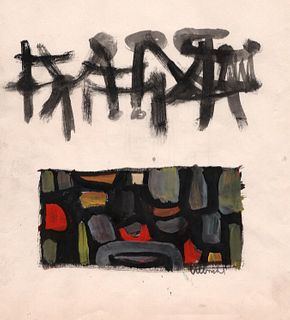JOSE ARPA PEREA (Carmona, 1858 - Seville, 1952). "San Antonio, USA". Oil on canvas. Re-colored. It has slight repainting. Signed and located in th
Lot 66
About Seller
Setdart Auction House
Carrer Aragó 346
Barcelona
Spain
Setdart Subastas was born in 2004 and is currently the first online art auction in Spain with solidity, prestige and reliability guaranteed by our more than 60,000 users. Setdart has a young, dynamic and enterprising team ready to successfully manage the purchase and sale of art works through custom...Read more
Estimate:
EUR€15,000 - EUR€20,000
$16,129.03 - $21,505.38
Absentee vs Live bid
Two ways to bid:
- Leave a max absentee bid and the platform will bid on your behalf up to your maximum bid during the live auction.
- Bid live during the auction and your bids will be submitted real-time to the auctioneer.
Bid Increments
| Price | Bid Increment |
|---|---|
| EUR€0 | EUR€10 |
| EUR€200 | EUR€25 |
| EUR€500 | EUR€50 |
| EUR€1,000 | EUR€100 |
| EUR€3,000 | EUR€200 |
| EUR€5,000 | EUR€500 |
| EUR€10,000 | EUR€1,000 |
| EUR€20,000 | EUR€2,000 |
| EUR€50,000 | EUR€5,000 |
About Auction
By Setdart Auction House
Oct 27, 2021
Set Reminder
2021-10-27 10:00:00
2021-10-27 10:00:00
America/New_York
Bidsquare
Bidsquare : 19th & 20th Century Paintings & Decorative Arts
https://www.bidsquare.com/auctions/setdart-auction-house/19th-20th-century-paintings-decorative-arts-7767
Setdart Auction House sofia@setdart.com
Setdart Auction House sofia@setdart.com
- Lot Description
JOSE ARPA PEREA (Carmona, 1858 - Seville, 1952). "San Antonio, USA". Oil on canvas. Re-colored. It has slight repainting. Signed and located in the lower left corner. Size: 98 x 82 cm. In this work of arid landscape, the artist deploys a palette rich in shades and color variations, which brings a great richness to the few elements that make up this desert landscape. Through touches with the brush he achieves an almost microscopic image of the small vegetation growing in the center of the scene. This solitary image has the presence of a child whose blue dungarees stand out against the warmth of the ochers. This work, located in San Antonio, speaks of a key facet in the visa of the artist, who had to leave Mexico due to the revolution, settling in the Texan city of San Antonio, where he created an art school. José Arpa Perea was a Spanish painter specialized in landscapes who developed much of his work in North America. He moved from Carmona to Seville when he was ten years old, where he combined his work as a brush painter with night classes at the School of Fine Arts of Santa Isabel de Hungría in Seville from 1876, where he met Eduardo Cano. Between 1883 and 1886 he lived in the city of Rome, with great needs due to the meager scholarship granted to him by the Diputación de Sevilla, where he painted historical canvases. On his return to Seville, he set up his own studio and began to be recognized, obtaining commissions such as the decoration of the Mercantile Circle and the Military Casino of the city. He deepened his orientalist facet thanks to a trip to Morocco in 1895. He lived in Mexico between 1896 and 1910, leaving later to San Antonio (Texas, United States) because of the Mexican Revolution, setting up a painting academy in this city and receiving commissions, enjoying an economic situation that allowed him to make frequent trips to Spain, with long stays in Seville and visits to the Cantabrian coast. He stayed in this American city for more than 30 years. Throughout his life he was in frequent contact with the landscape painters of the well-known Alcalá de Guadaira School, and his work could be seen in numerous cities in all the countries where he lived (Seville...), and is preserved in important private collections around the world and in prominent institutions such as the Museum of Fine Arts of Seville, the Cajasol Museum, the Museum of Huelva, the San Antonio Museum of Art (United States), the University Museum Casa de los Muñecos (Puebla, Mexico), etc.
- Shipping Info
-
In-house shipping available. Please inquire at admin@setdart.com.
-
- Buyer's Premium



 EUR
EUR CAD
CAD AUD
AUD GBP
GBP MXN
MXN HKD
HKD CNY
CNY MYR
MYR SEK
SEK SGD
SGD CHF
CHF THB
THB









